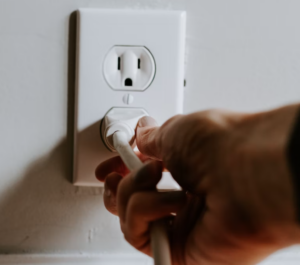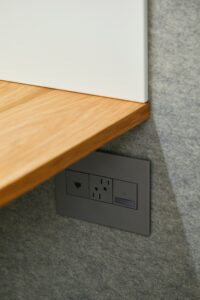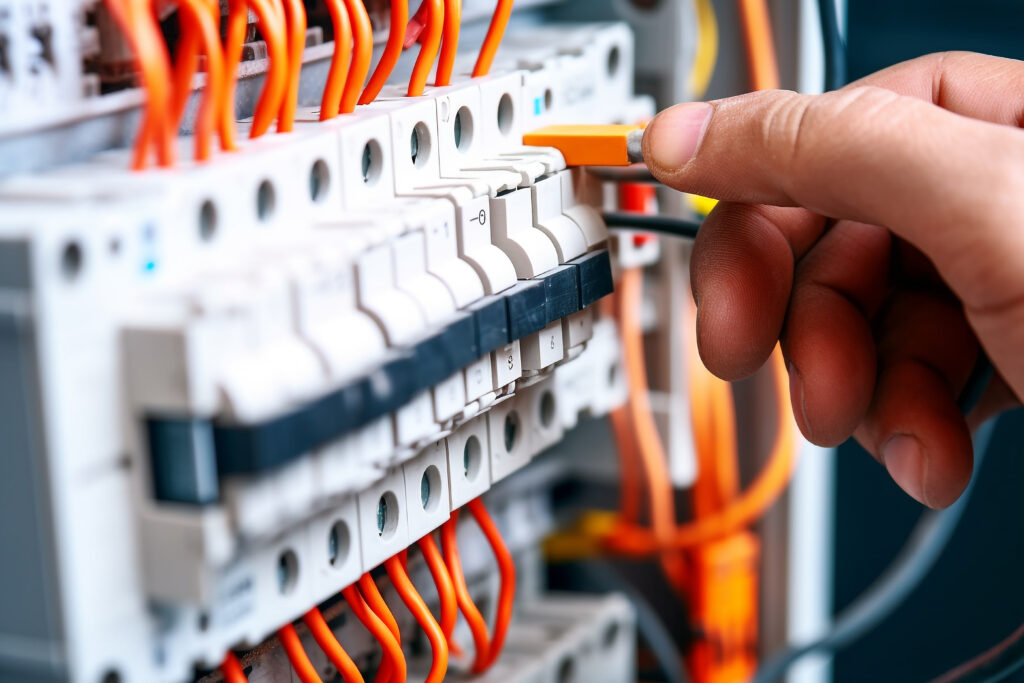
Are you curious about how your home’s electricity system works? Do you want to know the difference between grounded and ungrounded outlets in your home? Grounded and ungrounded outlets are two of the most common types of electrical outlets found in residential homes. Knowing what the difference is between these outlets can help ensure that your home has a safe and proper setup for power distribution. Keeping your house safe from electricity is key to protecting yourself from fire, shock and other hazardous effects. We’ll cover the basics of grounded and ungrounded outlets – including how they work and when to use them – so that you can make an informed decision about which type should be used in different areas of your home.
What are Grounded and Ungrounded Outlets
Outlets come in two types — grounded, and ungrounded. A grounded outlet is one with three prongs — two vertical slots, one round hole, or a combination of both. This outlet connects to systems of wiring that are installed and connected together to conduct electricity safely. The outlet will also show a “G” around its ground wire receptor. Grounded outlets contain a hot (often black) wire, a neutral (often white) wire, and a ground (often green). The wiring configuration of a grounded outlet automatically protects the outlet by providing an escape route for electricity away from individuals if there is ever a short circuit or overload.
(often white) wire, and a ground (often green). The wiring configuration of a grounded outlet automatically protects the outlet by providing an escape route for electricity away from individuals if there is ever a short circuit or overload.
In contrast, an ungrounded outlet has only two prongs; it is not connected to the electrical grounding system and is therefore considered not as safe. These two-prong outlets appear more simple than their counterparts but can put users at risk of electrical accidents as they are not fitted with a ground fault interrupter (GFI) or surge protector. If ungrounded outlets are used, it requires additional safety precautions like surge suppressors and GFCI outlet breakers to be installed in order to maintain safe conditions when using these types of outlet connections.
Both outlet types can be used at home but it’s recommended that you use the grounded outlet if available. Doing so ensures that any unexpected buildup of electricity is discharged safely and does not cause an electric shock.
How to Tell the Difference Between Grounded and Ungrounded Outlets
Knowing the difference between grounded and ungrounded outlets can make all the difference when it comes to protecting your electronics from power surges and other electrical issues. An outlet is grounded when it is connected to a circuit with three wires–two hot and one neutral. The outlet will have three slots where plugs can be inserted, allowing electricity to flow from the appliance to the outlet. Conversely, an outlet is considered ungrounded when there are only two wires connected to the outlet instead of the usual three—one hot wire and one neutral wire.
When to Use Each Kind of Outlet
Outlet fixtures with grounded outlets provide a safer level of protection than those with ungrounded outlets. It is essential to ensure that  outlet fixtures in areas where you may come into contact with water, such as kitchens and bathrooms, are equipped with grounded outlet fixtures. Additionally, your home’s HVAC system, washer, dryer, and other large appliances should always be installed with grounded outlet fixtures.
outlet fixtures in areas where you may come into contact with water, such as kitchens and bathrooms, are equipped with grounded outlet fixtures. Additionally, your home’s HVAC system, washer, dryer, and other large appliances should always be installed with grounded outlet fixtures.
Ungrounded outlets may be used when a two-hole receptacle is needed, as they have only two slots and therefore require fewer wires to connect. These are usually found in older appliances such as clocks, radios, and lamps for instance. However, these appliances are able to be plugged into a grounded outlet.
Generally speaking, outlets installed after 1985 are supposed to be grounded. If your outlet is ungrounded, consider having an electrician replace it with a qualified GFCI outlet, which will incorporate great safety features for your home.
Can You Change the Outlet Type
It is possible to change your outlet type from ungrounded to grounded, although it is suggested to use professional electrical work to complete the task. A qualified electrician can determine what kind of outlet you currently have and advise you on the best way to upgrade it if necessary. Grounding an outlet requires careful installation of a grounding wire between the outlet and your home’s grounding system in order to allow excess energy from the outlet to safely dissipate into the ground instead of remaining in your building. When upgrading your outlets, it is important to use an outlet tester to ensure that they are properly wired after installation and prior to using them.
upgrade it if necessary. Grounding an outlet requires careful installation of a grounding wire between the outlet and your home’s grounding system in order to allow excess energy from the outlet to safely dissipate into the ground instead of remaining in your building. When upgrading your outlets, it is important to use an outlet tester to ensure that they are properly wired after installation and prior to using them.
If you are looking to change from an ungrounded outlet to a grounded outlet, the best solution would be to have the outlet replaced entirely with a new, properly-grounded outlet – this will ensure that your household appliances are properly protected in the event of any issues arising due to an electrical fault.
Contact Coastal Home Services Today
Outlets are an important part of any home and understanding the difference between grounded and ungrounded outlets is crucial. If you’re unsure which type of outlet you have, look for a metal tab connecting the top and bottom vertical slots on the side of the outlet. This indicates that the outlet is grounded.
If you need help installing or repairing your outlets, contact Coastal Home Services. We will be happy to assist you in ensuring your home has the right kind of outlet for all your needs safely installed by a professional.


